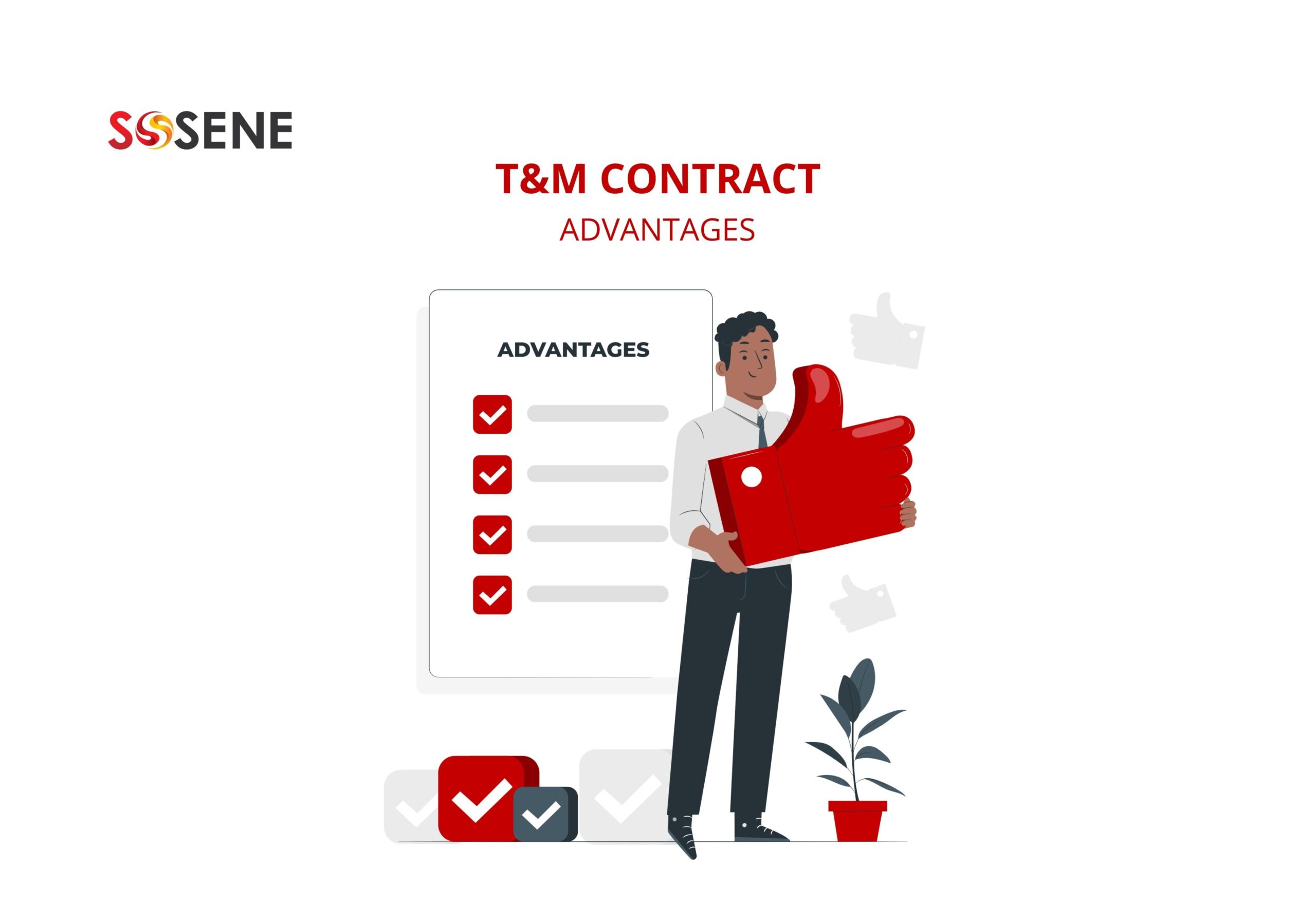The Comprehensive Knowledge of Time and Materials Contract
Initially, there was a tendency toward using a fixed-price model in outsourcing agreements. However, several different business models have emerged and are widely utilized, one of which is known as the Time and Materials contract (or T&M contract). Choosing the proper pricing contract can be a daunting task since it must be aligned with your company’s operating processes, requirements, and objectives, along with overhead costs borne by the vendor.
T&M and Fixed price are considered two dominant choices, and both have their different advantages and disadvantages. However, in today’s article, Sosene primarily focus on the T&M model and the main difference between these two models.Read more about The Manifest Names Sosene Among The Top Vietnam Mobile App Developers
What is Time and Materials Contract?

Parts of a Time and Materials Contract
Any contract’s purpose is to fulfill project criteria, cover the expenses and overhead, and generate a profit for the contractor. Below are some fundamental elements you should include in your T&M contract:
- Labor rates: It should cover not just the employees’ and subcontractors’ hourly salaries but also the executives that supervise the project and invoices.
- Maximum labor hours: A maximum number of labor hours can be classified to avoid runaway costs.
- Materials markup: The business service will invoice for the actual cost of materials (consisting of freight and specified markup), which is often between 15% and 35%.
- T&M NTE (Time and materials not-to-exceed clause): The entire project is perhaps included with a not-to-exceed quote so that the client can be aware of the maximum expense before work begins.
- Payment milestones: In some circumstances, the agreed-upon milestones should be specified to sustain the contractor’s workflow.
When to use T&M contract:
- It is suitable for long-term projects asking for dynamic needs.
- The scope of work and durations are unable to be determined.
- T&M contract is flexible, which is easier to vary the workloads and modify the scope.
The Advantages and Disadvantages of Time and Materials Contract
1. The advantages of T&M Contract
Using the T&M model can provide many benefits. However, the below information only lists three main valuable pros that will be easy to recognize.
Fast Start – Fast Response
T&M contract doesn’t require meticulous planning. Changers are made during product development to respond quickly to market demands.
High Flexibility
As long as the clients have enough budget, adđing, eliminating, or upgrading any feature seem noy to be a big problem.
Better Control
T&M contract is commonly deployed in Agile development, which allows the client to participate in the working process. Therefore, there will have many sprints, iterations, and meeting to disscuss and consult about the progress and next steps.
2. The Disadvantages of Time and Materials Contract
Some of the downsides of T&M contract that will be encountered are as follows:
More Involvement Requirement
As a necessity to oversee the project from beginning to ending, communication between the supplier and customer is often quite frequent. Yet, T&M may not be the optimal approach if the clients cannot participate.
Over Budget Plan
T&M is a flexible model. It’s capable of changing the requirement during the development process. However, any differences from the first briefing will lead to an extra fee
Uncertain Timeline
Due to the market demands, the project may alter anytime. And the specific release date is difficult to estimate. That is why defining deadlines is essential in this model
The Differences Between Time and Materials Contract and Fixed Price Contract









